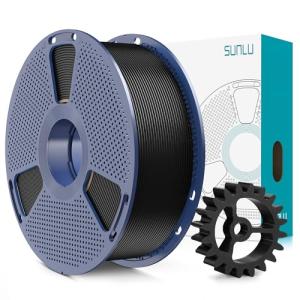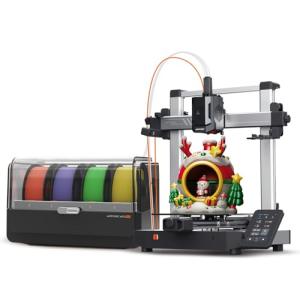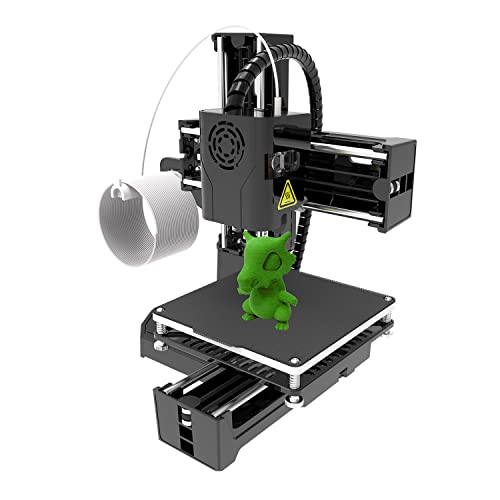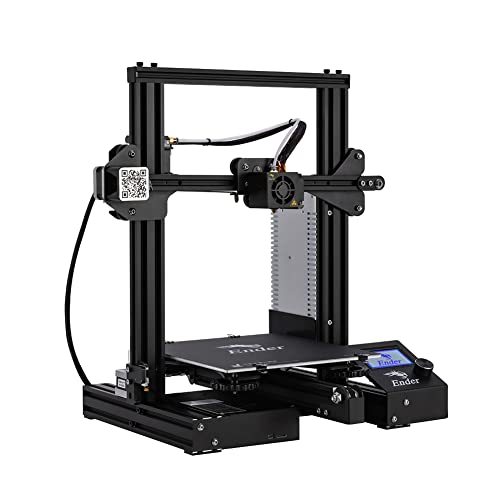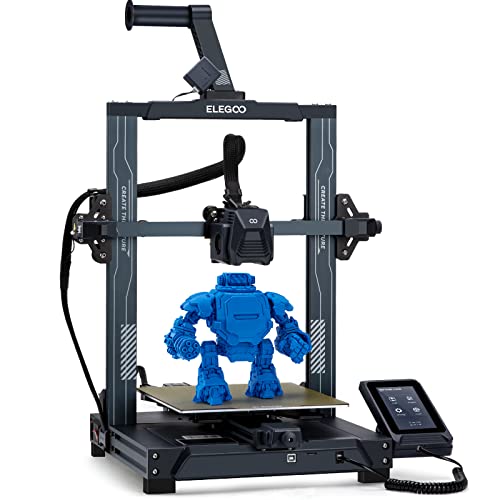When diving into the world of 3D printing, knowing what to look for can make all the difference. Here’s a quick rundown of key features that will help you find a 3D printer that suits your needs.
Print Quality
First off, check out the print quality. You want a printer that can produce detailed models. Look for a printer with a layer resolution of at least 0.1 mm. This will give you smooth surfaces and clear details, making your prints look professional.
Build Size
Next, consider the build size. This is the maximum size of your prints. If you plan on making larger items, look for printers with bigger build volumes. A good range to aim for is around 200mm x 200mm x 200mm, which is perfect for most beginner projects.
Ease of Use
Don’t underestimate how important ease of use is. A user-friendly interface and simple setup can make your 3D printing journey much smoother. Look for features like touchscreen controls or easy assembly to get printing right away. If the printer comes with great customer support or a helpful community, that’s a major plus.
Filament Compatibility
Lastly, check out what materials the printer can use. If you’re just starting, PLA filament is a safe bet, but having the option to use other materials like ABS or PETG later on can open up more possibilities. It's all about flexibility and making sure you can experiment as you get more comfortable with printing.
3D Printer Types Explained
When you're diving into 3D printing, the first step is figuring out what type of 3D printer suits your needs. Each type has its perks and quirks, so let’s break it down. This is part of your ultimate 3D Printer Buying Guide, and knowing the differences can save you time and money.
First up, we have FDM printers (Fused Deposition Modeling). These are the most common types, especially for beginners. They work by melting plastic filament and laying it down layer by layer. They're great for printing prototypes, toys, and other functional items. FDM printers are usually more affordable and come with a variety of filament options.
Next on the list are Resin printers. If you’re after high detail, these are the way to go. They use light to cure liquid resin into solid objects. They're fantastic for creating intricate designs, making them popular for jewelry and miniatures. Just keep in mind, they can be a bit messier and more costly, considering the price of resin and post-processing needs.
SLM/Metal printers are for those looking to take it up a notch. These machines use lasers to melt metal powder into complex parts. They’re mainly used in industries like aerospace and medical, and they come with a hefty price tag. If you’re a hobbyist or just starting out, these might not be the right fit yet.
Finally, there are Multi-material printers. These bad boys can handle different types of filaments or resins at once. They give you the freedom to create objects with various colors and materials in a single print. They're a bit pricier, so keep that in mind as you navigate your 3D Printer Buying Guide. Choose wisely, and you’ll find the right tool for your creative projects!
SUNLU PLA+ 3D Printer Filament 1.75mm Black
Get reliable prints with this durable and easy-to-use black filament
Product information
$19.99 $13.99
Product Review Score
4.6 out of 5 stars
188 reviewsProduct links
Budget Options for Every Wallet
If you’re diving into the 3D printing world, there are budget options that won’t break the bank. You don’t need to spend a fortune to get started. Many budget-friendly models offer great performance and features, perfect for beginners. This section of our 3D Printer Buying Guide is all about helping you find those gems.
First up, check out the Creality Ender 3. This printer is a superstar in the affordable category. It’s easy to assemble, delivers solid print quality, and you can find it for under $300. Plus, the community support for this printer is fantastic, so you’ll always have tips and tricks handy.
Another solid option is the Anycubic Mega S. It's user-friendly and comes pre-assembled, which is a huge plus if you’re not into DIY projects. You can snag it for around $300 as well, and it’s known for producing smooth prints right out of the box.
For anyone who wants something ready to go, the Monoprice Select Mini V2 is a great pick. It’s compact, perfect for small spaces, and offers good print quality. Priced around $220, this little machine is a steal for beginners looking to experiment without a big investment.
Keep in mind, while these budget printers might not have every high-end feature, they can deliver fantastic results with a little practice. Finding the right model for your needs is key, and that’s what this 3D Printer Buying Guide is here to help you with!
Anycubic Kobra 3 V2 Multicolor 3D Printer
Create stunning multicolor designs easily with the user-friendly Anycubic Kobra 3 V2
Product information
$379.99 $339.99
Product Review Score
4.22 out of 5 stars
9 reviewsProduct links
Tips for Getting Started
Diving into the world of 3D printing can be super exciting, but it can also feel a little overwhelming if you're just getting started. Here are some straightforward tips to help you along the way in this 3D Printer Buying Guide.
First off, think about what you want to create. Are you into making models, tools, or maybe some cool household items? Knowing your goals helps narrow down your options. Some printers are better for intricate designs, while others focus on sturdiness for practical things.
Next, don't skimp on the research. Check out reviews and ratings from other users. Their experiences can give you great insights into how each printer performs over time, which is super helpful while making your choice. You’ll want something that won’t just sit on the shelf!
Also, consider what type of filament you'll use. Different 3D printers work with different materials, so make sure to pick one that matches your projects. Some common options are PLA, ABS, and PETG. Each has its own quirks, so picking the right one is key.
Lastly, keep in mind the learning curve. Don’t get discouraged if it takes a bit to figure everything out. Join online communities or forums to connect with other beginners. You'll find loads of support and helpful tips there – plus, it makes the whole process a lot more fun!
